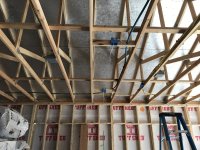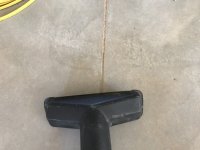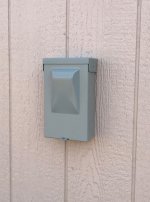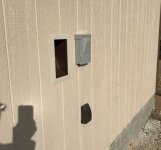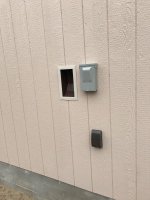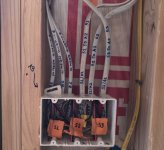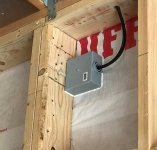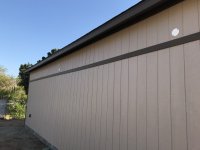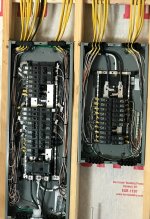I had this happen "before this ground rod was part of the code" when lightning hit a 50' tall pine tree adjacent to my shop. It sheared off the top 16' of pine tree, which landed behind my shop, and cut a 2" wide slot in the bark of the tree all the way down the tree and out one root. With the metal skinned passage door to the shop only a few feet away from the tree trunk, it hit that too, and it and cut two slots through the 3/8" plywood soffit above each of the top door corners, to get into my shop wiring, then went through it to the shop panel. It then went through the ground and neutral wires in the underground feeder cable too, and and through, the crawl space of my house to the main panel on the opposite end of the house and to ground. There have been two vertical ground rods and one buried horizontal ground rod and all are connected to the ground buss in the main panel since back when I bought the house and replaced all of the house electrical service equipment and added these ground rods. Our Alaskan Malamute was lying on the family room floor just above the UF cable when it hit, and she got quite a shock, launching her into the air and making her extremely afraid of thunderstorms from then on. The old style TV that was next to her had a rainbow effect on the picture tube when it was running after this, until I was able to degauss it. This was caused by the sudden and intense magnetic field surrounding the cable with the lighting running briefly through it and this is what affected to dog too.
Inside the shop, there were only a few flash marks visible between the neutral and ground busses within the shop panel, but I had to replace the wires running above the passage door that was hit. This cable controlled my shop lights and the switches were on the opposite side of the door from the panel.
Two days later, I had taken the day off, and I was lucky enough to be sitting at my bench in the shop when the 240 volt outlet behind my radial saw (opposite wall from the panel and not being used) suddenly flashed and popped, igniting the paper covering on the wall insulation (no wall covering at that time). Had I not been there in the shop when this happened, I would surely have lost my shop. After I turned the breaker off, a glass of water put the fire out, which was by then, burning up the surface of the insulation and almost to the ceiling.
The later code (this happened about 22 years ago) now requires this additional ground rod at the sub panels when they are located in different buildings, but that afternoon after that fire, I was installing that additional ground rod for my shop and Hi-Pot testing all of the shop wiring to determine how much more of the wiring needed replacing. Fortunately, only that one cable to the light switch needed to be replaced. The plug on the radial saw was welded into the wall outlet and couldn't be unplugged, so both of them needed replacing too.
Yes, I have become a believer in having a very good electrical grounding system on my property. There is a small 30 amp 240 volt panel in my well house 200+ ft from the house and it has it's own ground rod too. All of my outdoor wiring between my house, shop, well, and even the main electric service from the street are all under ground now. I have also connected the cable and telephone company's grounds to my ground system to keep everything at the same ground potential. If not all kept equal, the differences between them can flow through your TV and telephone electronics and destroy them. Keeping them all at the same potential is the best way to avoid this damage. differences in voltage between these grounds can frequently cause damage to electronic equipment, but the damage is much less likely if they are all tied together at their service points into the house.
Charley


